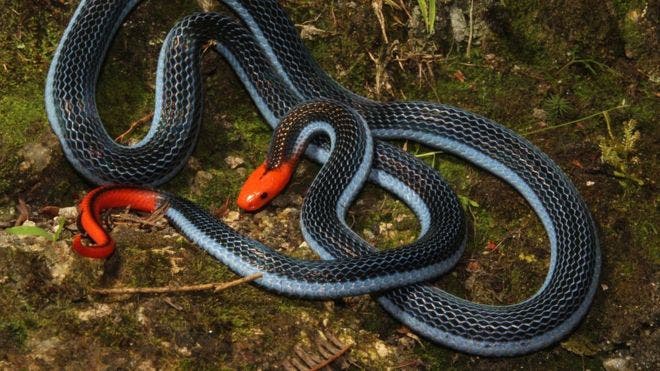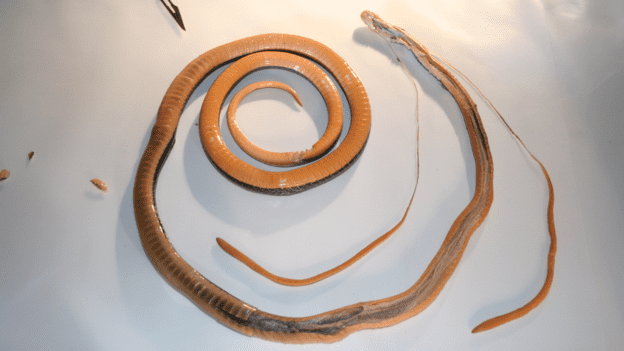
Meet the blue coral snake (Calliophis bivirgatus) — a mesmerizing long-gland snake that’s called as the ‘killer of killers’ because it’s known to attack and eat some of the deadliest snakes in the world. King cobras are on the menu, for instance. Now, a team of researchers who studied the snake’s glands say its venom targets brain receptors that are involved in processing pain in humans. The next generation of painkillers which are quicker and stronger than anything before it could come from this slithering assassin.
You often have to look in peculiar (and dangerous) places for innovation

Native to southeast Asia, the blue coral snake has the biggest venom glands in the world, reaching one quarter of its 2-meter long body length. An international team of researchers, among them Dr Bryan Fry from the University of Queensland, sought to investigate the therapeutic potential of this killer’s venom because it acts very fast.
Venomous snakes can kill people, but the venom itself is typically slow-acting. The prey is dead in hours, but if you extract the venom and turn it into a drug, you can get a nice sedative. The blue coral snake’s venom, however, acts lightning fast because it needs to kill dangerous predators as soon as possible so as not to leave room for retaliation. Making drugs out of this kind of venom, which is similar in action to that of some scorpions and cone snails, could make for a nice painkiller. The added benefit is that it would come from a vertebrate, which would make the drugs more compatible to humans from an evolutionary perspective than venom sourced from scorpions, for instance.
“The speciality in my lab is to use evolution as our map, so we seek out the weirdest things we can find,” Dr Fry told News.com.au. “Because we have a very simple premise that if you want to find something new and wonderful for use in human medicine, you’re more likely to find it from a very unusual venom.”
Simply put, “We can’t predict where the next wonder drug is going to come from,” the venomologist said.
“Here out of this enigmatic, extraordinarily rare animal we have made a discovery that could greatly benefit human health.”
Dr Fry and colleagues found out how the blue coral snake causes its victims to instantly spasm. Inside the venom, a number of unusual peptides bind to receptors in the brain and causes all of the victim’s nerves to fire at once. This neural overload causes instant paralysis.
[ALSO READ] How anti-venom is made and why it’s so precious
These peptides act on a particular set of sodium channels which are known to be important in treating human health. So, even if the snake’s venom doesn’t get turned into a drug itself, at least we can learn a lot about how pain relief in the brain works, said Fry.
Also, what Fry and colleagues have done is an exercise in creativity and taking cues from nature. In the future, however, such exercises will become increasingly difficult as the threat to biodiversity becomes greater. Nowadays, the blue coral snake is very rare after its habitat has been reduced by 80 percent. Who knows what other wonders of nature hold secrets and keys to human happiness, longevity or wellness. The products of millions of years of evolution stand before our noses — and we’re squandering them.
Was this helpful?



